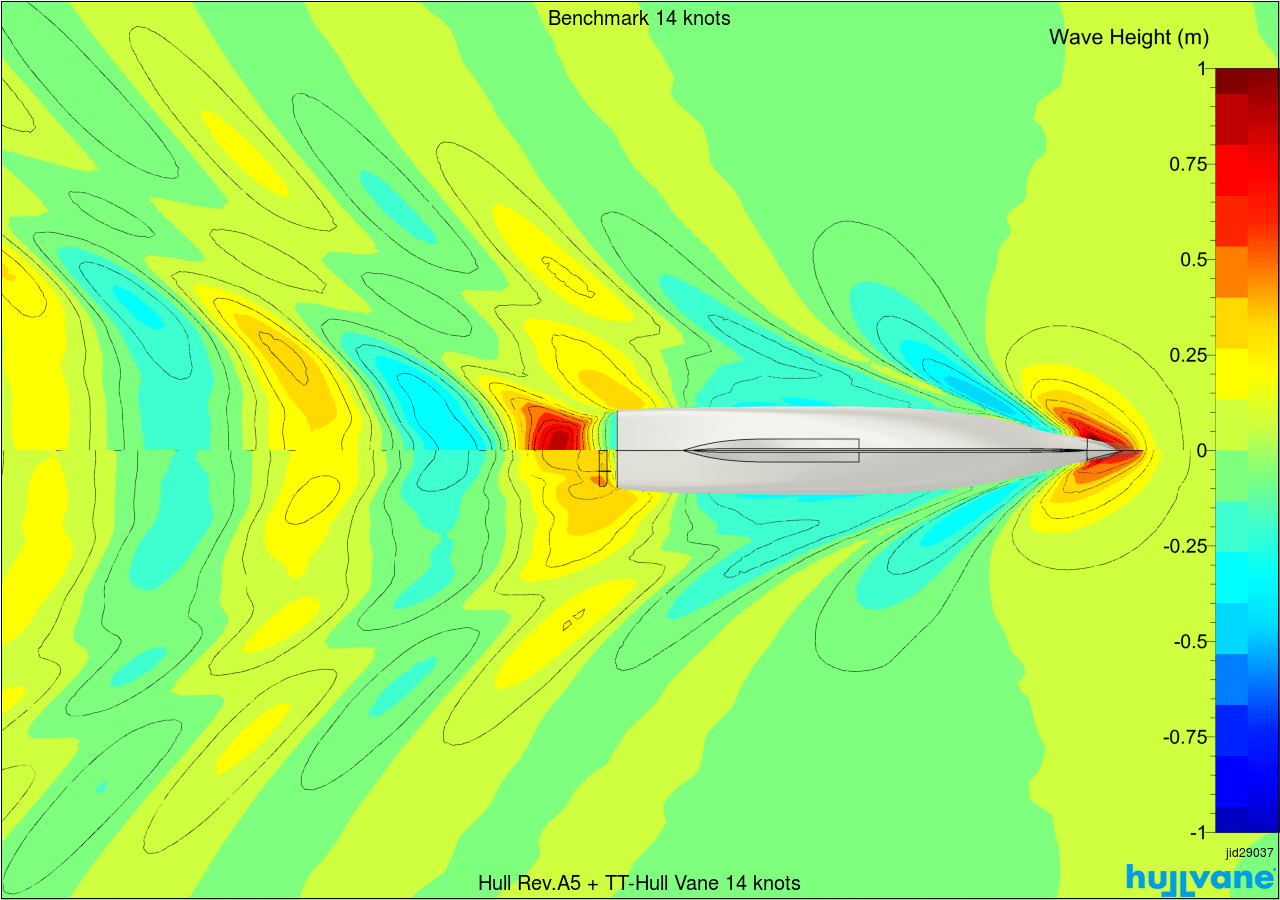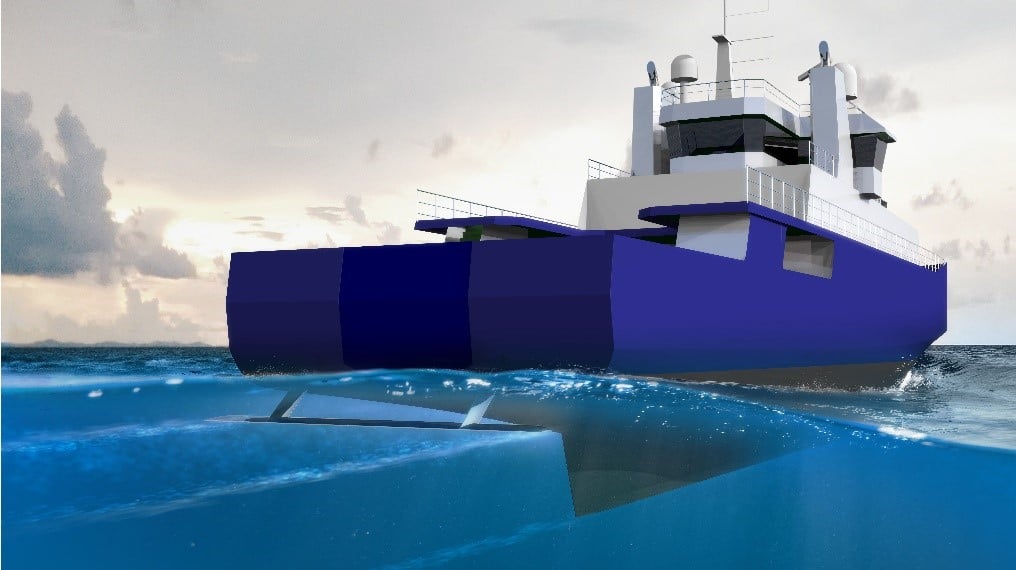Earlier this year, Hvide Sande Shipyard (Denmark) won a public tender for the design and construction of a new 64m Offshore Patrol Vessel. As the lifecycle costs and seakeeping characteristics are very important for this vessel, Hvide Sande Shipyard worked with Hull Vane BV (Netherlands) during the bid phase.
Hull Vane® is a patented hydrodynamic appendage which converts energy from the stern wave and of the ship motions into forward thrust. CFD analyses on the hull for the 64m OPV showed that indeed, the Hull Vane® would prove to be of significant added value for resistance reduction at all speeds (>7%). Based on this preliminary analysis, Hvide Sande Shipyard decided to integrate Hull Vane® in the bid as an integral part of the design.
Optimisation
Following the order for the vessel, Hvide Sande Shipyard commissioned Hull Vane BV to fully optimise the Hull Vane®, which was done with Computational Fluid Dynamics using the AMPO-RAGEC method (Automated Multi-Parameter Optimisation through Randomised Geometry Creation). The naval architects of Polarkonsult (Norway) then further optimised the aft ship and fore ship to reach the best possible overall hull efficiency, taking into account the effect of the Hull Vane®.
As the vessel will consume most fuel over the year at 14 knots, this was the focus speed for the optimisation, and the performance was also checked at 10 knots and the top speed of 17.5 knots. At all speeds, the total obtained resistance reduction is in excess of 10%, peaking at over 15% at 14 knots. The Hull Vane® works essentially by converting stern wave energy into forward thrust, and this effect is clearly visible in the reduction of stern wave.

Wave profiles of the benchmark at 14 knots (upper halve), and the optimised design with Hull Vane® (lower halve).
The Offshore Patrol Vessel will have a stern ramp to launch a daughter craft by means of a slide-out cradle. Model tests on another OPV have shown that the dampening of the motions from the Hull Vane®, particularly in the aft ship, will be very beneficial for the launch and recovery of the daughter craft. The reduction of wake also improves the manoeuvre. As there will be almost no “reverse wake” pushing the daughter craft forward, launch and recovery can be done at higher speeds. The seakeeping benefits of the Hull Vane® will be particularly beneficial for the OPV, as she will spend most of her time in the rough North Sea. The Hull Vane® dampens the pitching motions and reduces bow slamming.
Construction of the Hull Vane® will start shortly, for a delivery in 2021. It is the 41st Hull Vane® to be ordered, and the 15th for a patrol vessel.
